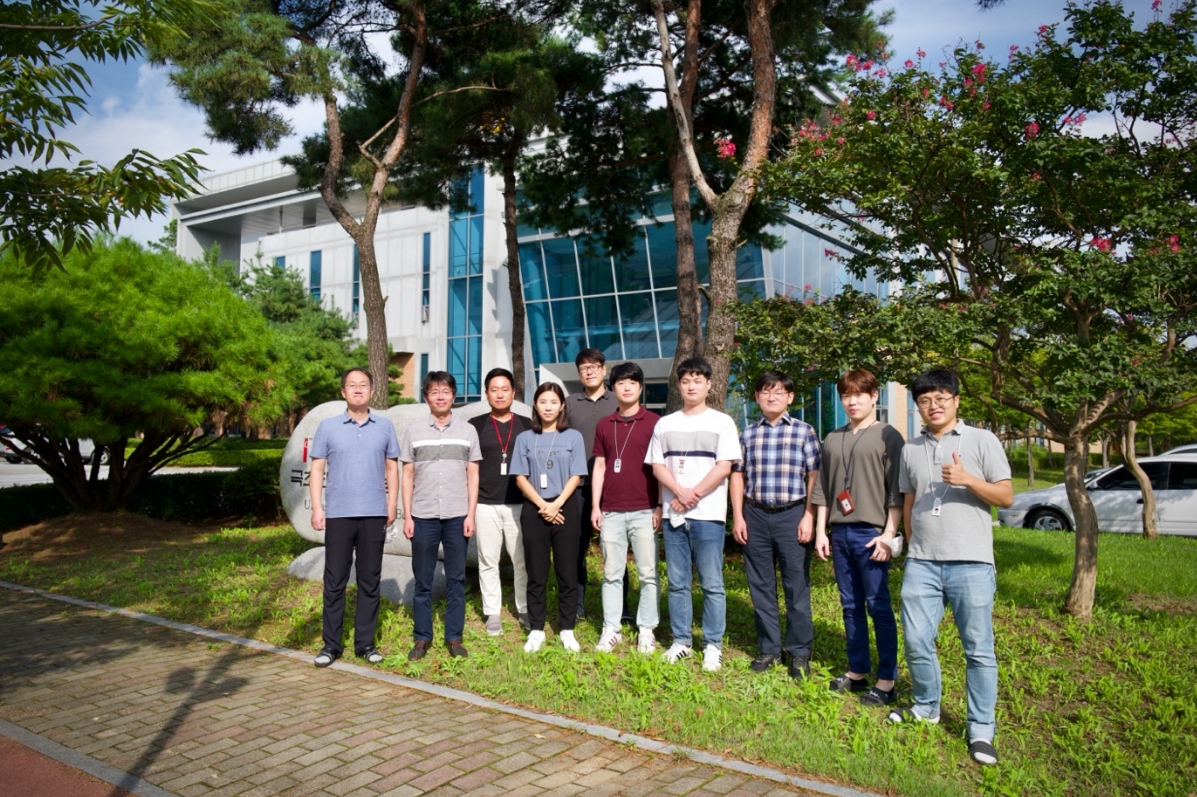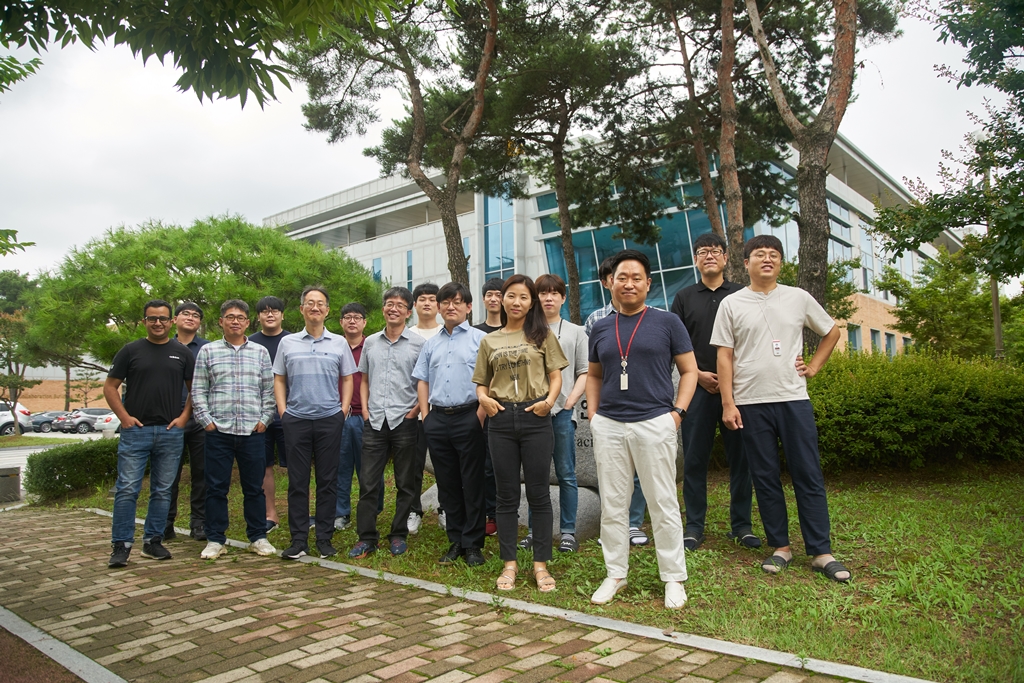Center for Relativistic Laser ScienceExplore the interaction between ultra-intense light and matter
mainmenu
▪ Research Overview
An ultra-high intensity laser is crucial for conducting scientific research on relativistic laser-matter interaction under extreme physical conditions. CoReLS has developed and commissioned a 20-fs, 4-PW laser in 2017 and a versatile 150-TW laser. The 4-PW laser operating at 0.1 Hz began to be utilized intensively after improving the laser wavefront and the beam pointing stability. An OPCPA pre-amplifier and a cross-polarized wave generation (XPW) stage were installed to shorten the pulse duration and improve the temporal contract of the 4-PW laser. The high temporal contrast better than 1012 up to a few ps before the main pulse was achieved by employing a double plasma mirror technique. The 4-PW laser wavefront was corrected by using two deformable mirrors with feed-back loop, and its stability was improved by minimizing the temperature variation in the laser room, especially in the optical table area. After tightly focusing the laser beam with an f/1.6 off-axis parabolic mirror, its intensity reached 5×1022 W/cm2 in 2019, the highest laser intensity ever achieved, which was further enhanced to 1×1023 W/cm2 in 2020. In addition, the 150-TW laser operating at 5 Hz has been also actively utilized for exploring newly proposed laser-matter interactions and for conducting preliminary experiments of large-scale experimental campaigns using the 4-PW laser.

u
▪ Research Goal
· Stable operation of multi-PW lasers (< 20 fs)
· Enhancement of temporal contrast of multi-PW laser (> 1012)
· Achievement of ultra-high laser intensity (> 1023 W/cm2)
▪ Research Contents
1. Sub-20 fs, PW laser
A short pulse duration is necessary to achieve an ultra-high peak power. Two key techniques have been used to generate an ultra-short pulse in the 4-PW laser. Firstly, a XPW technique has been applied to broaden the pulse spectrum through a third-order nonlinear optical effect. Secondly, an OPCPA amplifier which is a nonlinear amplification stage with a broadband gain spectrum was installed as a pre-amplifier of the 4-PW laser. The laser pulse with a broad spectrum was amplified through the OPCPA amplifier, and its spectrum was well maintained without any narrowing of the spectrum. Moreover, the gain depletion effect in subsequent amplifiers could be compensated for by shaping the output spectrum of the OPCPA pre-amplifier, resulting in a final spectral width of 80 nm (FWHM).
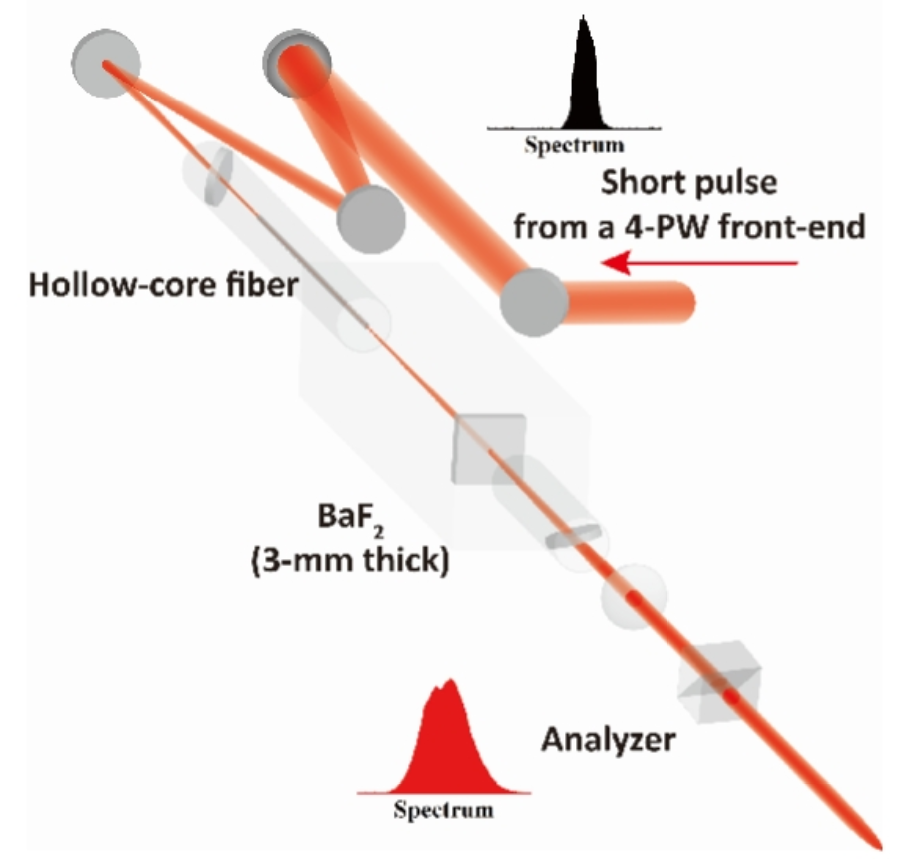
Spectral broadening in cross-polarized wave generation
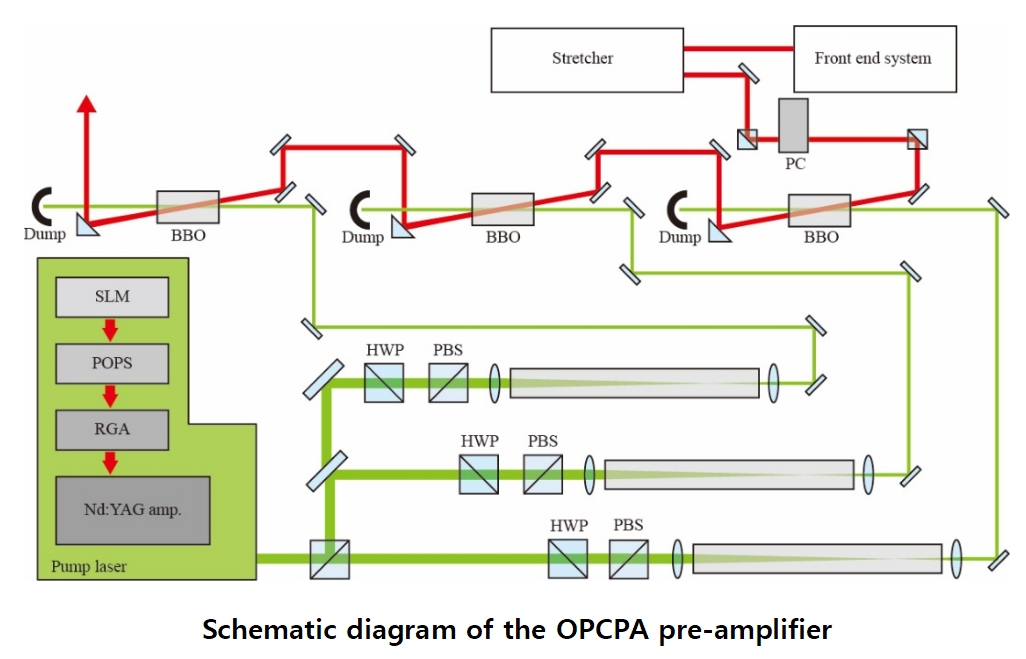
2. PW laser with high temporal contrast
A high temporal contrast of a high-intense laser pulse is an essential parameter for exploring the relativistic laser-matter interaction. A metal target starts to dissolve and evaporate at a pulse intensity of >1010 W/cm2. A pre-pulse and a pedestal of the amplified spontaneous emission (ASE) accompanied with a high-intense laser pulse are required to be suppressed because they can be intense enough to result in the premature formation of a rapidly expanding plasma before the arrival of the main pulse. In order to eliminate or suppress the pre-pulse and ASE, a XPW technique and a double plasma mirror (DPM) technique were employed. When a short pulse from a front-end passes through a third-order nonlinear crystal in the XPW stage, a XPW pulse is generated by a high-intensity pulse, on the other hand, the prepulse and the pedestal cannot generate XPW signals due to their relatively low intensities. The DPM system removes the pre-pulse and the pedestal by injecting the laser pulse into an anti-reflection-coated mirror. The prepulse and the pedestal with low intensities penetrates the mirror while the main pulse is reflected by the plasma generated on the mirror surface by the leading edge of the main pulse. Therefore, the relativistic laser-material interaction of the main pulse can be observed without a severe modification of the target condition by the pre-pulse and the pedestal.
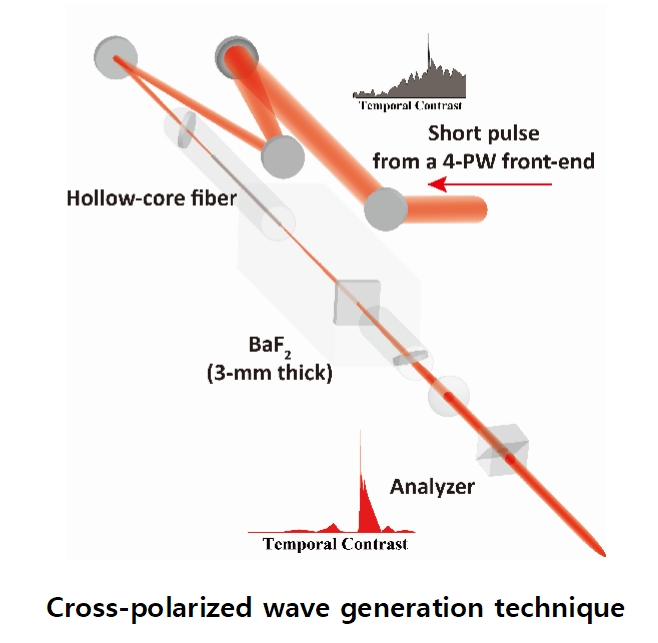
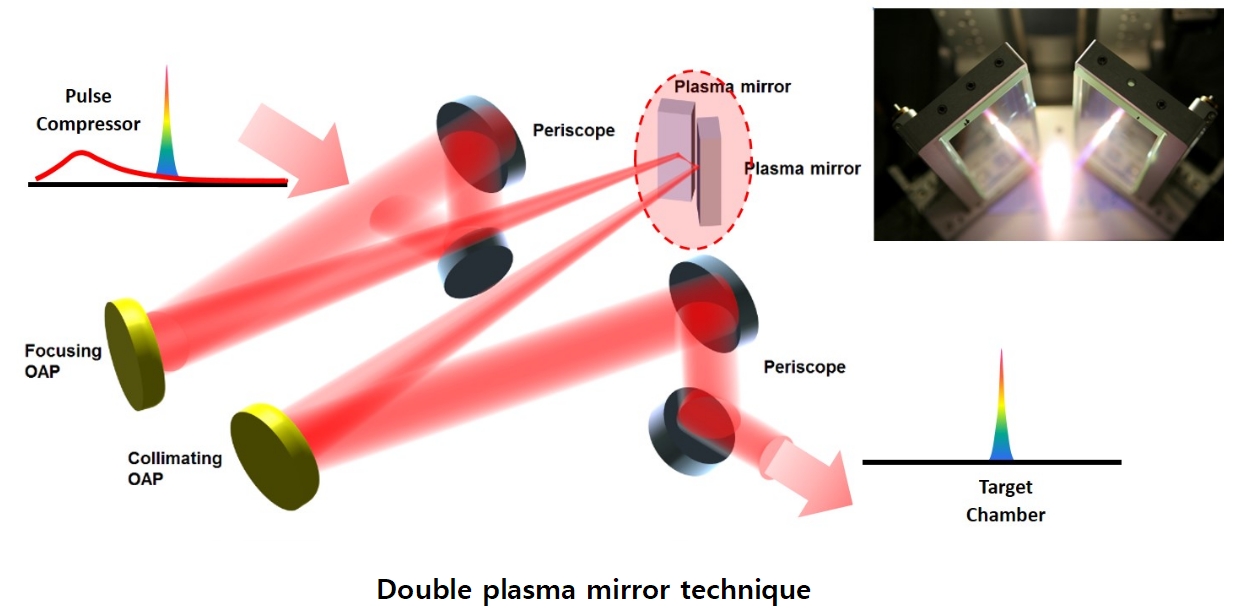
3. Ultra-high intensity laser
An ultra-high laser intensity can be achieved by minimizing the wavefront distortion of a laser beam and by focusing the laser beam tightly. The distorted wavefront of the laser pulse deteriorates tight focusing for a minimum focal spot and thus inhibits reaching a maximum laser intensity. In order to correct the wavefront distortion, two adaptive optics systems, composed of a wavefront sensor and a deformable mirror, were installed before and after the pulse compressor. The wavefront error was minimized by compensating for the measured wavefront error with the deformable mirror through the feed-back loop. The wavefront-corrected laser pulse was tightly focused with an f/1.6 off-axis parabolic mirror. The measured focal spot size (FWHM) was 1.5μm×1.8 μm, and the peak intensity was 5×1022 W/cm2, which is the highest laser intensity measured to the best of our knowledge.

Consequently, the short pulse duration, the high temporal contrast and the ultra-high intensity have been pursued for the study of the relativistic laser-material interaction using the multi-PW laser. In the 4 PW laser, the XPW module and the OPCPA preamplifier were adopted to obtain a broad spectrum necessary for the susb-20-fs pulse duration. The high temporal contrast over 1012 was achieved by using the XPW and DPM techniques. The ultra-high intensity over 5×1022 W/cm2 was obtained by focusing the wavefront-corrected laser pulse tightly.
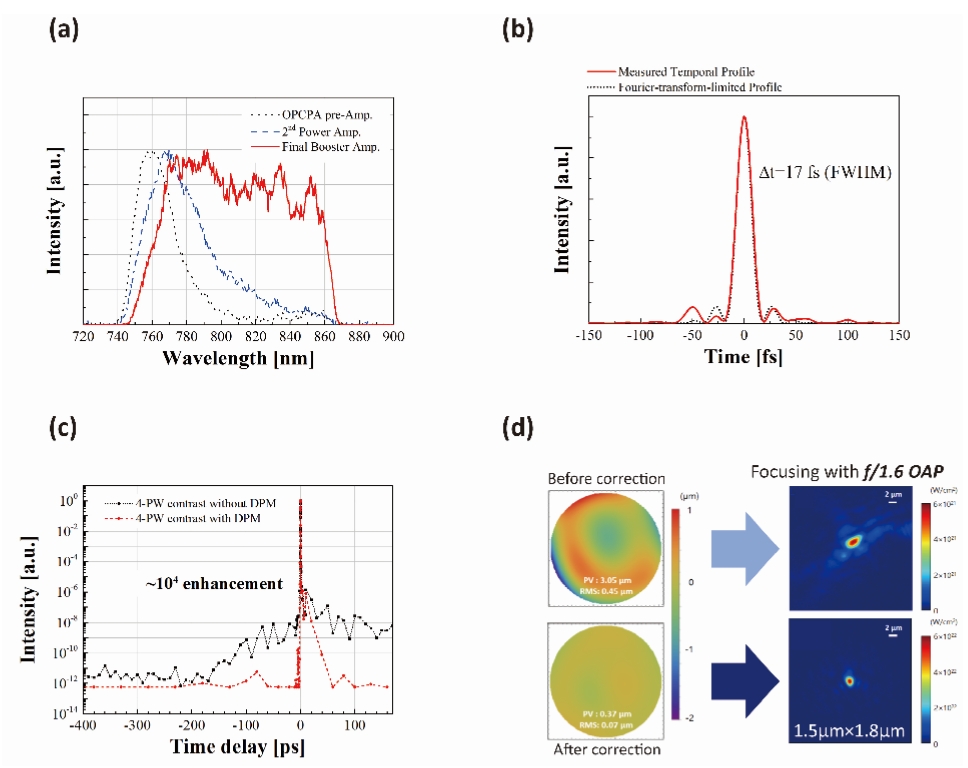
(a) The output spectra of amplifiers in the 4-PW laser
(b) The final temporal profile of the 4-PW laser pulse.
(c) The temporal contrast of the 4-PW laser pulse
(d) The focal spot images before and after wavefront correction
▪ Major Research Result
· The demonstration of the world’s highest laser intensity: Optics Express 27, 20412 (2019)
· The demonstration of the world’s shortest duration in multi-PW lasers: Optics Express 26, 24775 (2018)
· The demonstration of the most powerful multi-PW laser: Optics Letters 42, 2058 (2017)
▪ Staff
